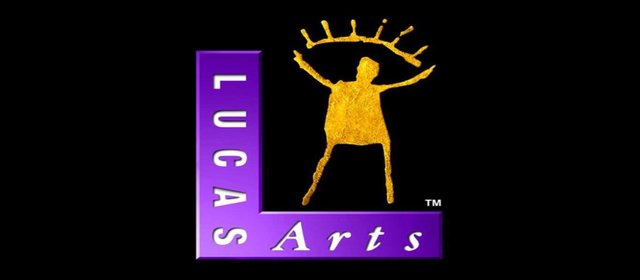Back at the start of April, the gaming community was rocked by the news that LucasArts – one of the most well-known and respected names in the video game industry (historically speaking) – was to be closed down by their parent company Disney. Of course, LucasArts had been a sleeping giant for many years now, struggling to reach the heights of their early days as LucasFilm Games, and their subsequent domination of PC gaming in the early nineteen-nineties.
Many modern or casual gamers won’t blink an eye now that LucasArts is gone, but for those who grew up with the games that the company produced, the games have left many, many lifelong memories. Whether you love the point and click graphic adventures made using the SCUMM engine, or you enjoyed becoming a Jedi in their Star Wars titles, there was quite a selection of different genres that LucasArts worked on across their back catalogue.
So join us for the GodisaGeek Vault, as we reminisce and look back at ten of the best gaming titles from the house that Lucas built:
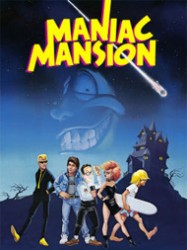 Maniac Mansion (1987):
Maniac Mansion (1987):
This was the game that really kick-started the period of great success that LucasArts enjoyed during the so-called “Golden Era” of adventure games. The SCUMM (Script Creation Utility for Maniac Mansion) engine which powered many of LucasArts’ most successful titles was developed for, and trialled, in Maniac Mansion and was the blueprint for the typical point and click game that we still think of, even today.
Not only that, but the game allowed users to pick their own team of three protagonists from a larger selection, each with their own skills and personalities. You could then switch between them at will, allowing the game to be solved in a variety of ways, depending on who you selected. The game was also famous for its strange sense of humour; another thing that was set to become a LucasArts trademark.
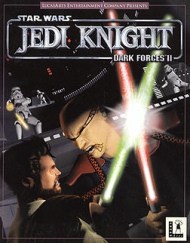 Star Wars Jedi Knight: Dark Forces II (1997):
Star Wars Jedi Knight: Dark Forces II (1997):
As you may have read in our latest Retro Corner article, the GodisaGeek team are big fans of this game. Not only was it a sequel to the inventive first-person shooter Dark Forces, but the game became the first time that players could wield a Lightsaber in a satisfying way.
However, not only did it fill that checkbox – enabling the dreams of many Star Wars fans to come true – but the game also featured incredibly well-designed, non-linear levels that were truly sprawling, great original music and amusing full-motion video cutscenes. It also allowed gamers to choose if they wanted to be a light or dark Jedi, and to harness the corresponding Force Powers, such as Force Choke or Force Lightning. It really did provide the full Jedi experience to gamers.
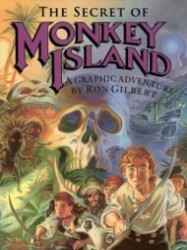 The Secret of Monkey Island (1990):
The Secret of Monkey Island (1990):
If Maniac Mansion was the game that built the engine and formed the basis for generations of future adventure games, Monkey Island was the game that set a high water mark in terms of quality, that few graphic adventures have ever managed to live up to. Created by Ron Gilbert, the game posed the question: “What if the old Disneyland ride Pirates of the Caribbean was actually a game?”
The title follows would-be Pirate Guybrush Threepwood as he must pass a series of trials and save the girl, in order to become a fully-fledged marauder. Not a thoroughly original idea, but what makes the game stand out are its fantastic sense of humour, clever script-writing and puzzle design. Monkey Island walks the line between seriousness and zany comedy carefully – keeping players gripped, whilst also keeping them laughing. There are few PC gamers who aren’t aware of this title; such is its lasting legacy.
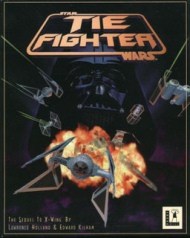 Star Wars: TIE Fighter (1994):
Star Wars: TIE Fighter (1994):
LucasArts had already had great success with the X-Wing space combat simulator from the year before, but TIE Fighter improved on it in almost every way with impressive new graphics, fantastic sound and a much improved artificial intelligence engine.
But the big thing that made the game stand out from its predecessor was that this time around gamers were allowed to climb into the cockpit of Imperial spaceships – working for Emperor Palpatine between the events of Empire Strikes Back and Return of the Jedi. Some gamers found the title lost its appeal when playing as a bad guy, but this was the perfect counterpoint for the original game and gave a whole different perspective on the battles.
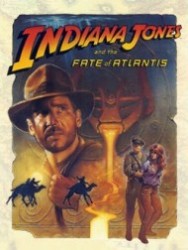 Indiana Jones and the Fate of Atlantis (1992):
Indiana Jones and the Fate of Atlantis (1992):
The Indiana Jones series of films are some of the most exciting and enduring cinematic adventures ever produced and, as such, they lend themselves rather well to the realm of video gaming. Whereas many action games have been developed using the Indiana Jones license, it is surely the graphic adventure games from LucasArts that are most fondly remembered.
Of those games, the Fate of Atlantis is surely the greatest. Rather than be a movie tie-in, a completely new story was created for our favourite adventurer, and the epic journey that it took players on around the world was typical of the series. The script-writing captured the wit and charm of the films perfectly too. It was perhaps the multiple-path gameplay – which was so rare at the time – that really marked the game out as revolutionary. This still stands as an example of how a licensed game should be done; not a re-tread of a film, but an entirely new adventure.
 Loom (1990):
Loom (1990):
Loom may not have quite the same name value as the other big-hitting LucasArts adventure games, but it was very inventive and perhaps took more risks than your regular LucasArts title. Everything in the world of Loom was created by the use of music and, rather than your regular point and click interface, the game required players to perform musical notes in-game to solve puzzles.
The game was so imaginative, with an entire fantasy world populated with interesting and unique characters, and the musical spells that could be cast were a great new interface. Spells could be cast and reversed, so players cold experiment with changing their environment as they wished. This was aided by the fact that Loom was the first LucasArts graphic adventure to follow the LucasArts Game Design Philosophy, where gamers would never die and have to re-start the game, no matter how stupid their actions.
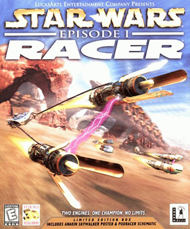 Star Wars Episode I: Racer (1999):
Star Wars Episode I: Racer (1999):
The Star Wars prequel trilogy was a failure with the critics and fans on many levels, and there were a lot of bad decisions made in the development of the three films – not least the “lovable” Jar Jar Binks. But if there was one thing that they did right, it would be the Podracing action sequences. Being high-speed drag races, the sport leant itself perfectly to the realm of video games.
And so Episode One Racer was produced for PC, Nintendo 64 and even in arcades. The control scheme was intuitive and fun to use, the tracks varied and interesting, and the opportunity to fix and upgrade your Podracers – as done in the Phantom Menace film itself – was great fun for Star Wars fans. The game accurately managed to capture the speed and excitement of the sport and translate it well into the home space.
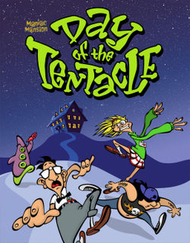 Day of the Tentacle (1993):
Day of the Tentacle (1993):
I didn’t particularly want to include sequels on this list, however Day of the Tentacle improved on the basics from Maniac Mansion in almost every way. The first thing that will hit you is the amazing cartoon graphic style, which suits the zany humour of the game perfectly, and is timeless in its quality, in that it still looks as good today as it did when it was first released.
The game allows players to control three protagonists – as in the original game – but now as well as switching between the kids, you also switch between different time periods, with your actions in one time period having an effect on another, in a very Back to the Future-type way. The scale of the adventure is more ambitious, the voice acting fantastic, and the laughs a lot bigger. Day of the Tentacle has aged tremendously well and still stands up to repeat playthroughs to this day.
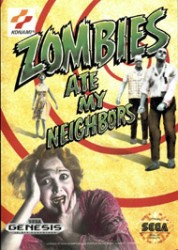 Zombies Ate My Neighbours (1993):
Zombies Ate My Neighbours (1993):
This is another game that we have previously extolled the virtues of in the monthly Retro Corner, and with good reason. The title was a huge departure for LucasArts – and one of the few non Star Wars games that they released on home consoles, rather than PC. Being a top-down shooter/puzzler, the game was a love letter to classic horror movies.
Everything about the game showed the obvious admiration that the team had for classic horror cinema, and the game was chock-full of little references and touches that will delight film buffs and gamers alike. The LucasArts sense of humour holds strong in this game once again, and although a sequel (Ghoul Patrol) was produced, it could not match the creativity and inventiveness of this original game. Play it in two-player mode for some of the best multiplayer gaming the the Super NES and Mega Drive had to offer.
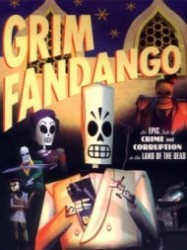 Grim Fandango (1998):
Grim Fandango (1998):
There cannot be a list of LucasArts games, or a company retrospective, that does not mention Grim Fandango. The game was at the same time both a high-water mark for adventure games and its own death knell.
LucasArts made the leap into three-dimensional adventure games with Grim Fandango, which was a bold move, but the design and art style of the title was so iconic and original, that even the sometimes blocky and unsightly character sprites could not sully the incredible visual impact. The sound design was also incredible, and really stays with you long after playing.
The game was a mesh of art-Deco, mid Ninteen-hundreds style and Mexican Day of the Dead art – where players controlled Manuel Calavera – travel agent of the dead. You must help the tragic hero make his way across the underworld in order to rescue the woman of his dreams from an eternity in purgatory. With hundreds of references to film and literature alike, the game was a real work of art, but the high budget and relative commercial failure was one of the final nails in the coffin for the genre; one from which it has never fully recovered. If you are going to go out though, you might as well go with a bang and Grim Fandango certainly did that.
Honorable Mentions:
Pipe Mania – The original pipe-placing panic game.
Sam & Max Hit the Road – Steve Purcell’s zany dog & rabbit crime-fighting duo.
Afterlife – The God game where you don’t control Earth, but Heaven & Hell.
The Vault at GodisaGeek.com is the opinion of only one of our writers. With that being the case, please use our commenting options below to let us know which were your favourite LucasArts games, and why?


